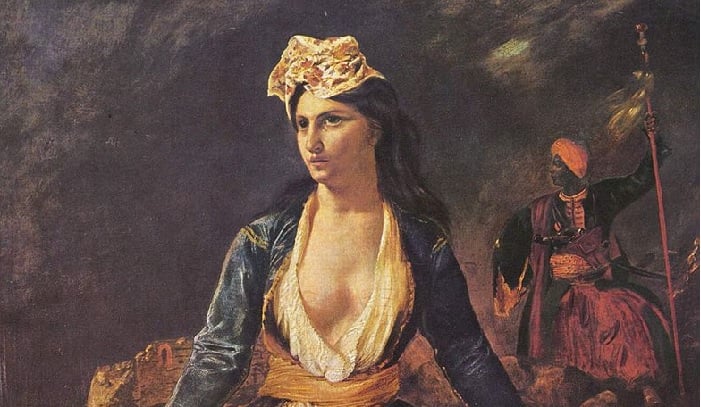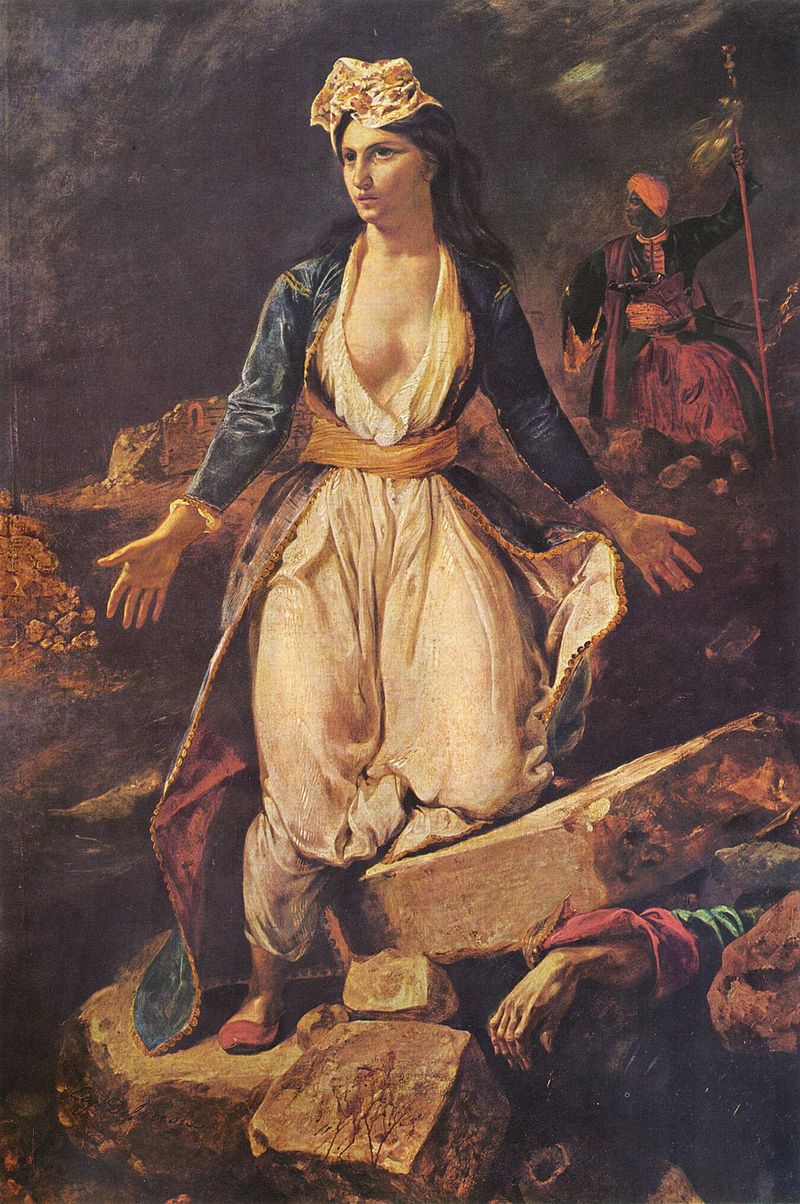

Painted in 1826 by Eugène Delacroix, the leading French Romantic painter of the day, Greece on the Ruins of Missolonghi is one of the most celebrated French paintings of the 19th century.
It was produced shortly after the event it commemorates. In 1825, during the Greek War of Independence from Ottoman occupation, Turkish troops besieged the city of Missolonghi.
The Greek population, already decimated by famine and epidemics, attempted a heroic liberation that ended in tragedy when the Turks killed most of the population of the city.
Delacroix, like many European artists and intellectuals, was a fervent supporter of the Greek cause. Most of the painting is dedicated to the figure of Greece herself, represented as a young woman wearing a traditional costume.

In the painting, Greece is depicted as a kneeling woman who occupies the major part of the painting. She is wearing a traditional Greek costume, her chest being bare, and she spreads her arms as a sign of sadness.
The hand of a dead victim can be seen protruding from the rubble beneath her feet. In the background, a dark-complexioned man wearing a yellow turban, who symbolizes the enemy, is planting a flag in the ground.
The Missolonghi exodus interested Delacroix not only because of his sympathies with the Greeks but also because the poet Lord Byron, whom Delacroix greatly admired, had died there.
The painting also borrows elements from Christianity.
As French art critic Alain Daguerre de Hureaux said: “Greece adopted the attitude of praying in the early centuries of Christianity. The blue coat and white robe, traditionally attributed to the Immaculate Conception, reinforces this analogy to a secular figure of Mary here. The strength of the image is the sharp contrast between the traditional allegory which induces an idealization of the model, and processing of the scene without any concession to the ideal.”
One of the largest museums in France outside of Paris is located in the city of Bordeaux and is called the “Musée des Beaux-Arts de Bordeaux.” It was established in the year 1821 and houses a collection of fine art ranging from the 15th century to the 20th century.
Greece on the Ruins of Missolonghi can be found in the North Wing of this museum along with various other works created by artists of both the Realist and Impressionist movements during the 19th century.
Delacroix, in contrast to the Neoclassical perfectionism of his chief rival Ingres, took for his inspiration the art of Rubens and painters of the Venetian Renaissance, with an attendant emphasis on color and movement rather than clarity of outline and carefully modelled form.
In the words of Baudelaire, “Delacroix was passionately in love with passion, but coldly determined to express passion as clearly as possible.” Together with Ingres, Delacroix is considered one of the last old Masters of painting and is one of the few who was ever photographed.
